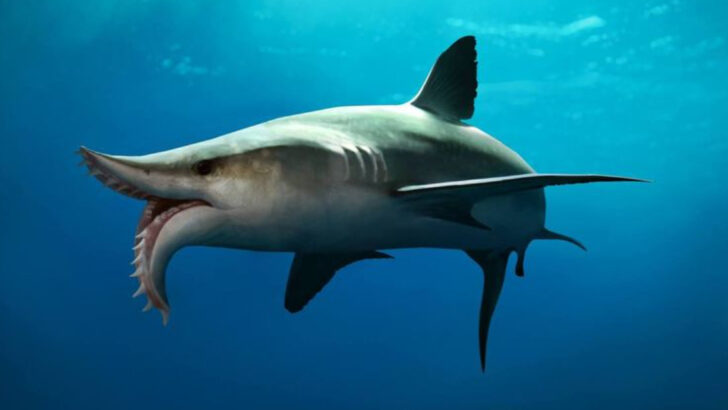Forget everything you think you know about sharks.
The giants of today? They’re guppies compared to the monsters that once ruled the deep. Prehistoric sharks were nightmare fuel—some as long as a school bus, with jaws that could swallow a grown human whole and teeth built like steak knives for sea creatures.
These weren’t just big fish. They were apex predators on a scale that’s hard to imagine.
We’re diving into the bone-crunching, fin-slicing world of seven prehistoric shark species that made today’s great whites look like baby pool toys.
Ready to meet the sea’s original monsters? Just don’t look down.
Megalodon
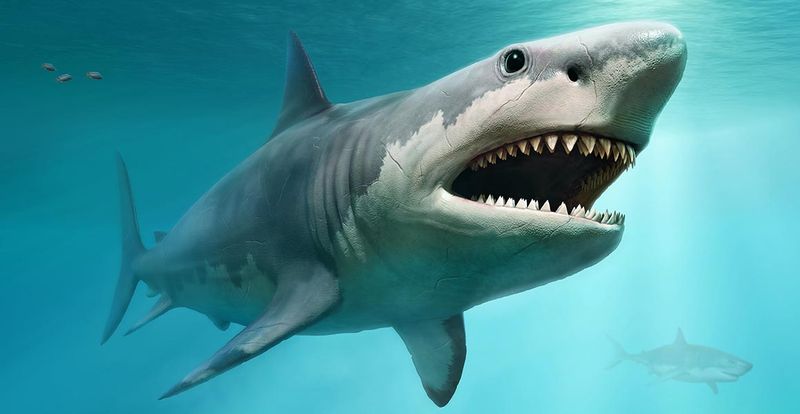
Imagine a shark as long as a bowling lane with teeth like daggers. Meet the Megalodon, the largest shark that ever lived. With teeth the size of a human hand, it could crush bones with ease.
This awe-inspiring predator roamed the oceans millions of years ago, preying on whales and other marine giants. Its powerful tail propelled it through the water like a torpedo, making it a fearsome hunter.
Today, the Megalodon remains a symbol of prehistoric power and mystery, capturing the imagination of shark enthusiasts worldwide.
Helicoprion
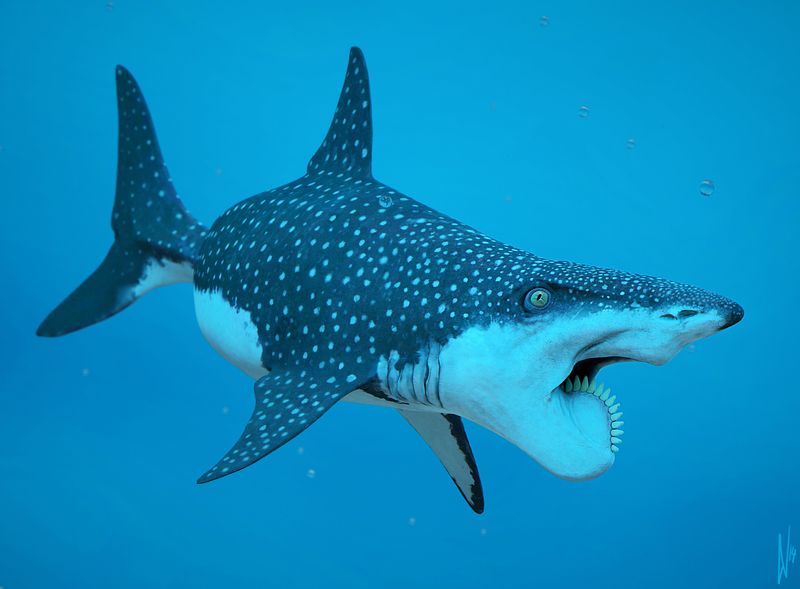
With its bizarre, spiral jaw lined with razor-sharp teeth, the Helicoprion was a peculiar predator. This ancient shark species puzzled scientists for decades. Its unique dental structure resembled a buzzsaw, slicing through prey with surgical precision.
Residing in the oceans over 250 million years ago, Helicoprion’s diet likely consisted of soft-bodied creatures. Its fossilized teeth, discovered globally, offer a glimpse into its mysterious existence.
Despite its odd appearance, Helicoprion was a proficient hunter, leaving a lasting legacy in the world of paleontology. Its spiral jaw remains one of nature’s most intriguing evolutionary marvels.
Cretoxyrhina
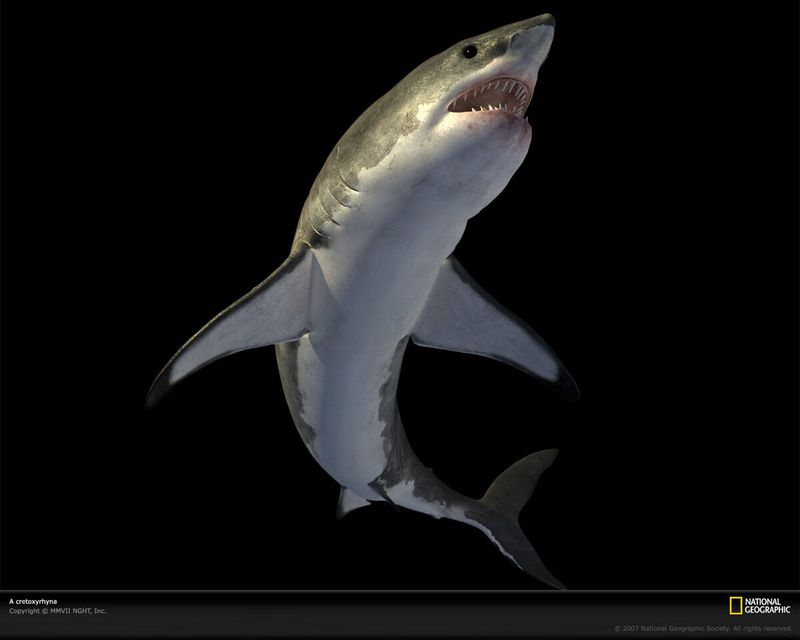
Nicknamed the “Ginsu Shark” for its slicing teeth, Cretoxyrhina was a swift predator of the Cretaceous seas. This formidable shark could reach lengths of 25 feet, rivaling today’s great whites.
With a streamlined body built for speed, Cretoxyrhina chased down prey with relentless tenacity. It thrived in the same era as the dinosaurs, preying on marine reptiles and large fish.
Fossils of this ancient shark have been uncovered in North America, providing valuable insights into its life and environment. Cretoxyrhina’s razor-like teeth are a testament to its predatory prowess.
Stethacanthus
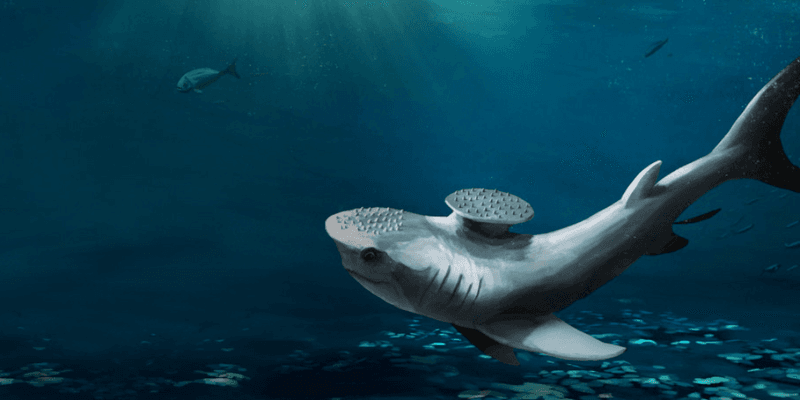
Enter the world of the Stethacanthus, a shark unlike any other. Sporting an anvil-shaped dorsal fin, it’s a creature straight out of a science fiction novel. This peculiar feature was possibly used for display or mating rituals.
Stethacanthus lived around 360 million years ago, sharing its habitat with early marine vertebrates. Although it was only about three feet long, its strange appearance made it a unique member of the shark lineage.
Its enigmatic fin structure continues to intrigue paleontologists, sparking debates about its evolutionary purpose.
Carcharocles angustidens
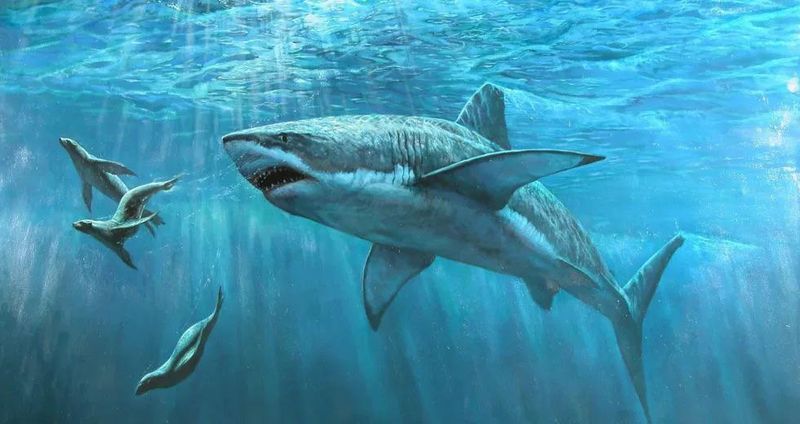
Carcharocles angustidens was a colossal predator with serrated teeth that tore through flesh effortlessly. Belonging to the lineage of the infamous Megalodon, it ruled the seas approximately 33 million years ago.
This giant shark measured around 30 feet in length, preying on early whales and large fish. Its teeth, similar to those of its larger relative, were perfectly adapted for capturing and dismembering prey.
Fossil evidence, including preserved teeth and vertebrae, has been found in various parts of the world, painting a picture of a formidable ancient ocean predator.
Xenacanthus
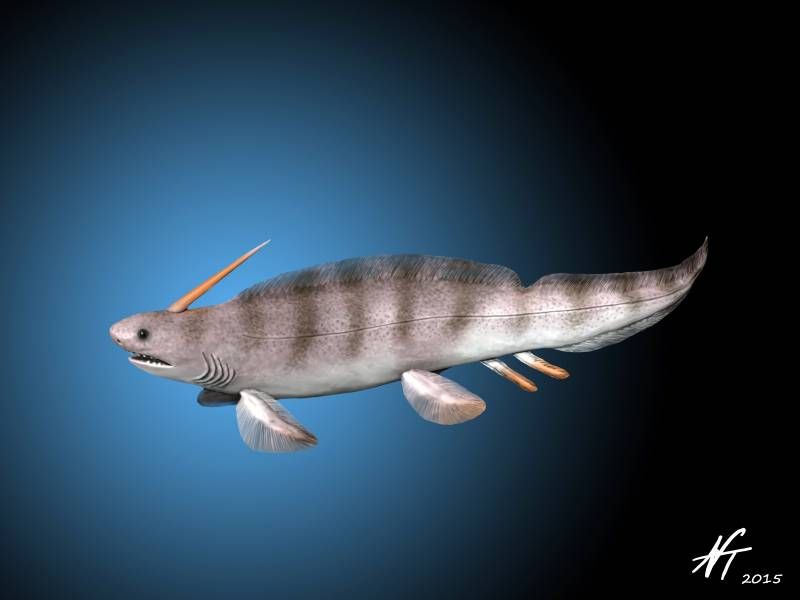
Xenacanthus, with its elongated, eel-like body, was a freshwater prehistoric shark. Measuring up to three feet, it inhabited rivers and lakes over 200 million years ago.
Its distinctive spine on the back of its head and forked teeth were unique adaptations for capturing prey in murky waters. Unlike its oceanic relatives, Xenacanthus thrived in freshwater habitats, a rarity among ancient sharks.
Fossils of Xenacanthus have been found in Europe and North America, offering a glimpse into its diverse ecological niche. This ancient shark’s adaptability is a testament to the evolutionary diversity of early sharks.
Hybodus
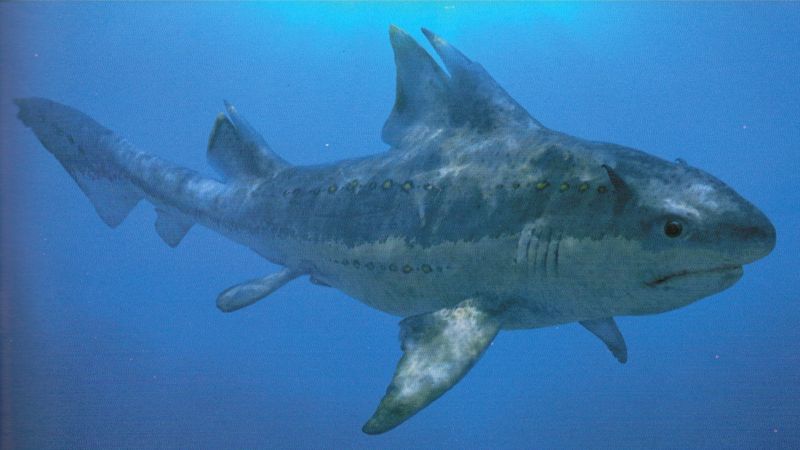
Hybodus was a versatile predator, navigating both coastal and open waters. Distinguished by its dual-purpose teeth—sharp at the front and blunt at the back—it could tackle a wide variety of prey.
Reaching lengths of up to six feet, Hybodus thrived during the Jurassic and Cretaceous periods. Its dorsal fin spines were likely used for defense or display, adding to its distinct appearance.
Fossils unearthed across multiple continents reveal its widespread existence. Hybodus represents a critical link in shark evolution, showcasing the adaptability and resilience of these ancient predators.
Squalicorax
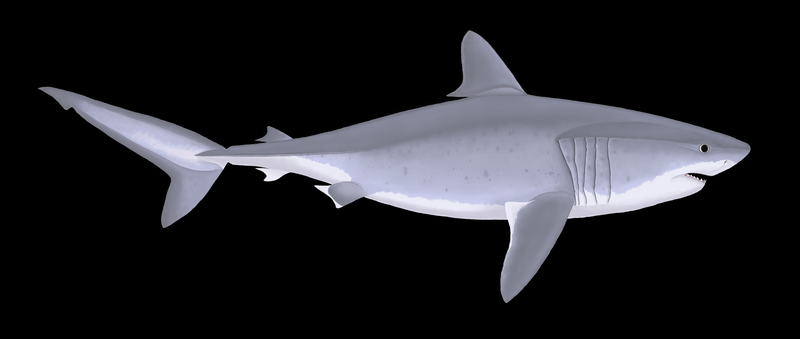
Meet Squalicorax, also known as the crow shark, a cunning predator of the Cretaceous period. This mid-sized shark swam the oceans roughly 100 to 66 million years ago, preying on a wide array of marine life.
Its serrated teeth were not just for show; they were perfect for slicing through the tough hides of its prey. Squalicorax was a scavenger as well as a hunter, making it an adaptable and versatile predator.
Fossils of Squalicorax teeth have been found alongside dinosaur bones, suggesting this shark even fed on the remains of these ancient giants, proving its resourcefulness in the prehistoric food chain.
Edestus

If there was a contest for the most bizarre prehistoric shark, Edestus would certainly be a contender. Known as the scissor-toothed shark, Edestus lived around 300 million years ago and possessed one of the most unique dental arrangements in the ocean.
Instead of replacing old teeth, Edestus’ teeth would grow in a curved fashion, resembling a pair of lethal scissors ready to slice through anything in its path. This unusual feature made it a formidable predator, hunting large fish with ease.
With its peculiar jaw structure, Edestus captured the curiosity of paleontologists, offering a fascinating glimpse into the diversity and adaptability of prehistoric sharks.
Ptychodus
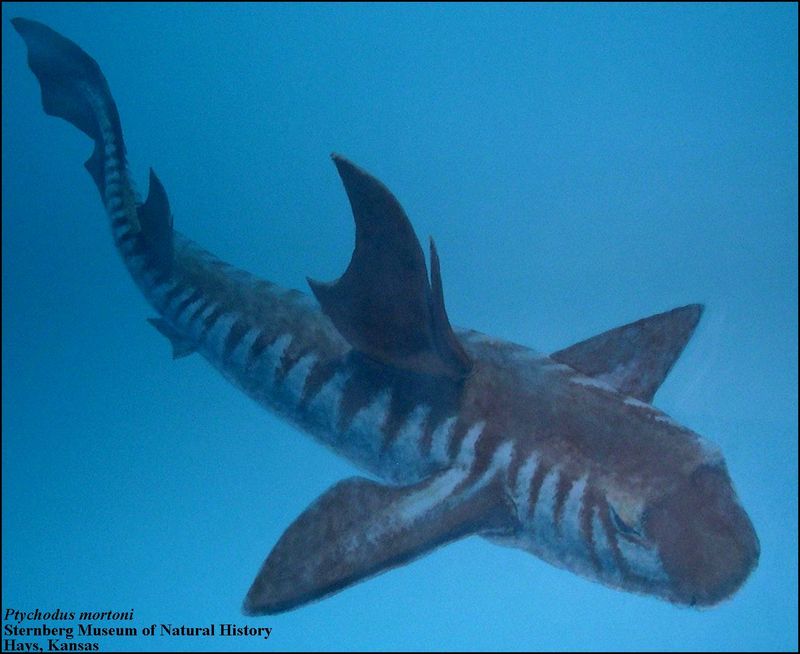
Think of a shark with a mouthful of broad, flat teeth perfect for crushing and grinding. This would be the Ptychodus, a giant shark that swam the oceans about 100 million years ago.
Ptychodus was not your typical predator. Instead of hunting other marine animals, it feasted on shellfish and crustaceans, using its powerful jaws to crush its prey. This diet required teeth that could withstand significant wear and tear.
The discovery of its fossils, particularly its teeth, has provided valuable insights into the feeding habits and ecological role of this remarkable shark, showcasing the incredible diversity of prehistoric marine life.

